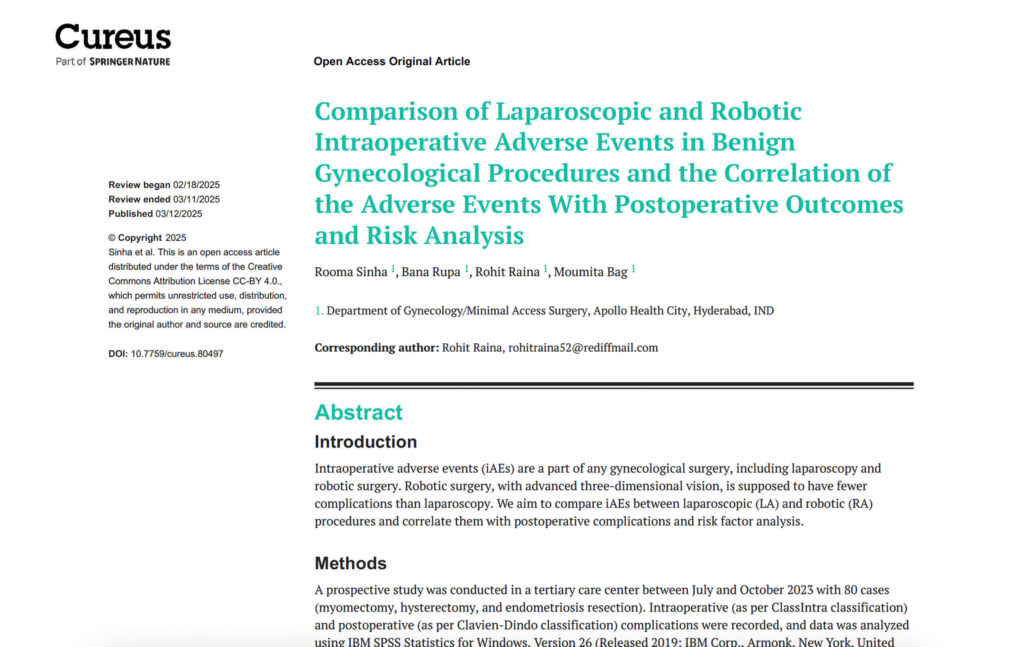Abstract
Introduction
Intraoperative adverse events (iAEs) are a part of any gynecological surgery, including laparoscopy and robotic surgery. Robotic surgery, with advanced three-dimensional vision, is supposed to have fewer complications than laparoscopy. We aim to compare iAEs between laparoscopic (LA) and robotic (RA) procedures and correlate them with postoperative complications and risk factor analysis.
Methods
A prospective study was conducted in a tertiary care center between July and October 2023 with 80 cases (myomectomy, hysterectomy, and endometriosis resection). Intraoperative (as per ClassIntra classification) and postoperative (as per Clavien-Dindo classification) complications were recorded, and data was analyzed using IBM SPSS Statistics for Windows, Version 26 (Released 2019; IBM Corp., Armonk, New York, United States). Categorical variables were summarized as n (%), while quantitative variables were summarized by mean ±S.D. A p-value less than 0.05 was considered statistically significant. Multivariate logistic regression analysis was done for risk analysis (adjusted odds ratio with 95% confidence interval).
Results
Overall, we reported 3.75% (3/80) iAEs (all in LA) and 32.5% (26/80) postoperative complications. Increased postoperative complications were seen in LA 15/40 (37.5%) than in RA 11/40 (27.5%). However, the difference was statistically insignificant (p =0.12 and p =0.47). Cases with higher iAE grades consecutively experienced higher postoperative complications (p 0.0001). The independent clinical risk factors, ASA score II status (aOR: 2.335, 95%CI: 0.707-7.709), increasing uterine size (aOR: 1.076, 95%CI: 0.953-1.214), endometriosis (aOR: 2.337, 95%CI: 0.615-8.878), previous surgical history (aOR: 1.595, 95%CI: 0.544-4.677), and lower preoperative hemoglobin (aOR: 0.721, 95%CI: 0.502-1.036), affecting postoperative complications were analyzed. However, none of the factors had a statistically significant association with postoperative complications.
Conclusions
We observed lesser complication rates in robotic surgery than in conventional laparoscopy. We also found that those with higher iAE grades were strongly associated with higher postoperative complication grades.



